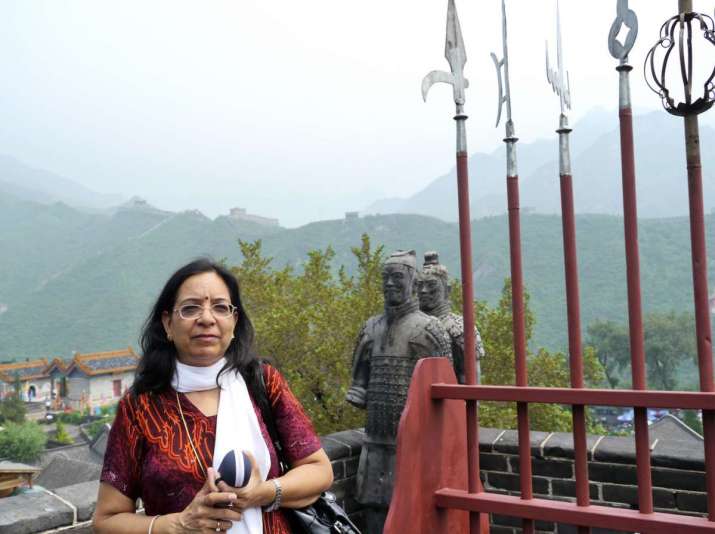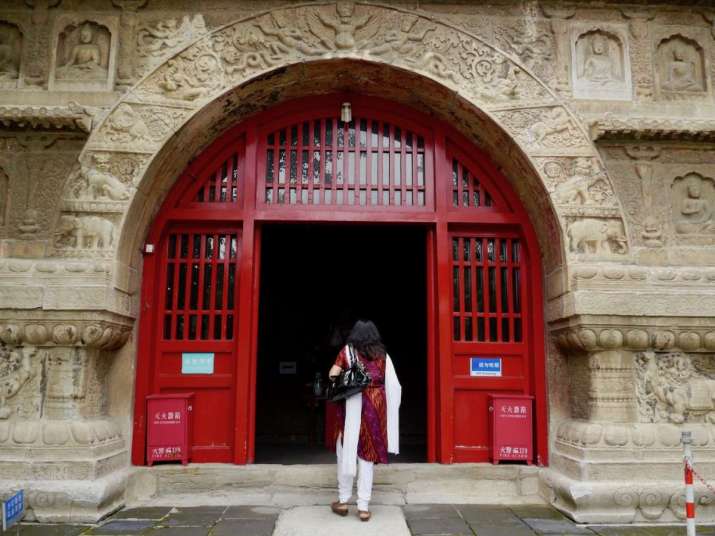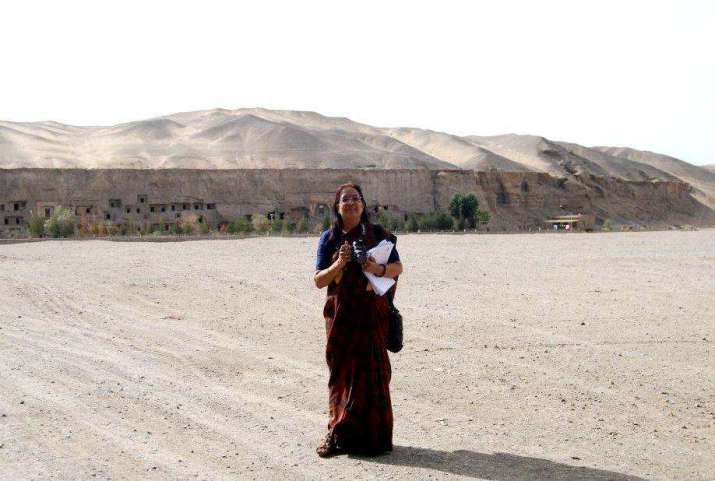
The eminent Indian scholar Prof. Dr. Shashi Bala is a specialist in Buddhist arts and cross-cultural connections among Asian countries, and a disciple of the most renowned Buddhist scholar in India, Prof. Dr. Lokesh Chandra. She has 45 years of research experience, exploring, documenting, and traveling widely, delivering lectures and organizing international conferences and exhibitions. She is also a dean of the Center of Indology at the Bharatiya Vidya Bhavan—an internationally reputed institution dedicated to the promotion of education and culture in India.
Recently Prof. Shashi Bala delivered a series of lectures dedicated to Buddhist cultural relations between India and China at several Indian cultural institutions, including the Indian National Trust for Art and Cultural Heritage, and the Vivekananda International Foundation. Buddhistdoor Global spoke with Prof. Shashi Bala about the ancient Buddhists links between India and China.

Image courtesy of Prof. Shashi Bala
Buddhistdoor Global: How did you begin exploring the Buddhist cultural ties between India and China?
Prof. Shashi Bala: It all happened when I was doing my master’s degree in Sanskrit linguistics. There was a professor from Japan, Prof. Chikyo Yamamoto, curator at the Reihokan Museum in Koyasan, who came to India to study at the National Museum. He and his wife stayed at Prof. Lokesh Chandra’s home, where I was also working. His wife wrote the Ushnisha Vijaya Dharani with a brush on rice paper and I was so fascinated by the Sanskrit dharani* written in Chinese characters.
The first Chinese document I worked on was an inscription from 67 CE that tells about the beginning of Indo-Chinese relations, when two Sanskrit scholars carrying Buddhist sutras, Kashyap Matang and Dharmaraksha, reached China on white horses. That inscription existed in China and the estampage was brought by the father of Prof. Lokesh Chandra, the famous Sanskrit scholar, linguist, and politician Prof. Dr. Raghu Vira. The most interesting thing is that the inscription is in Chinese. I had never studied Chinese, but Prof. Lokesh Chandra gave me some training to read Chinese characters and use Chinese dictionaries, and with that help I started working on the inscriptions.
Then I wrote a biography of Prof. Raghu Vira, who visited China as a state guest, invited by Premier Zhou Enlai. He collected a lot of relics of Indo-Chinese links and wrote a travelogue. It was very interesting for me to read that. It was from his book that I came to know for the first time about the Dunhuang Caves and the beauty of the sculptures and paintings there. I was looking at the images of buddhas and bodhisattvas and started working on relations between India and China. Also at that time, I came to know about the Gayatri Mantra that most Indians normally chant, discovered by Prof. Raghu Vira in China, written in four different scripts: Chinese, Mongol, Tibetan, and Uyghur.
During my college days, with the help of family and friends, I organized an exhibition on India’s international relations and the contributions of India in the field of culture. We showed quite a few documents and photographs from China.

BDG: What is your impression of contemporary Buddhist relations between India and China?
PSB: I would say that India and China have shared a deeply rooted culture over the past 2,000 years. The roots are so deep and the branches are high and innumerable. You can look at different aspects of Chinese culture and see the deep impact of Indian culture. Before Buddhism reached China, most Chinese emperors liked to build tombs, but once Buddhism arrived their energy turned more toward building temples and monasteries. The shift resulted in unparalleled abodes for the divine. There are monasteries, temples, and cave complexes. Nowhere else in the world can we find that scale of building.
We Indians are indebted because the Chinese have preserved a rich literary treasure, including texts that are lost in India forever but are still found in Chinese translations. Also, Xinjiang is now a part of China and the Silk Road has preserved immense materials and cultural relics. Many archeologists and explorers have excavated and preserved them in different collections in countries such as England, France, Germany, India, Japan, and Russia. Whenever I go to China, I visit museums, monasteries, and temples, and I meet people and observe keenly how they offer prayers at the monasteries, chant sutras, and bow to buddhas. Their gestures of devotion reflect the deep-rooted friendship between India and China. Wherever there are Buddhist statues and paintings in monasteries or temples, they are symbols of friendship between India and China.
When I meet Chinese people, I feel warm and close. All of my Chinese friends respect India because it is the land of the Buddha. Scholars in China are working meticulously on their heritage from different perspectives; it is their own culture that we have shared over 2,000 years.

BDG: What was the most significant discovery for you during your numerous visits to Chinese Buddhist heritage sites?
PSB: Many things fascinated me. First of all, I would like to mention the Sanskrit mantra Ushnisha Vijaya Dharani written on the Great Wall of China. Although I had seen the enstampage in India, it was inspiring to see it on the Great Wall. Only last year I had the chance to visit the Palace Museum in Beijing and I could see wonderful collections of Buddhist statues. They have been so well preserved over the centuries and venerated by the great emperors of China. The Kizil, Bezeklik, and Dunhuang caves are true wonders of Asia. The thought of the people with devotion in their hearts and talent in their hands who created that unbelievable treasure is mesmerizing. This fascination inspired me so at Dunhuang to write a short poem. A few lines from that poem, addressing my friend, are:
Look at the buddhas
And bodhisattvas
How they look at you!
The dreamy posture,
The beautiful colors,
The draperies diaphanous.
The goddesses fly bringing
Flowers from heaven, flowers,
Fruits and incense
To offer to the buddhas
To me it looked like a miracle. I could see many Sanskrit inscriptions in many types of handwriting. In the Bezeklik Caves the Uyghur kings have written donor inscriptions in Sanskrit. So much is ruined, but still whatever has been preserved are immortal signatures of a deep friendship between India and China that will continue for centuries to come.

* A Buddhist chant or recitation, usually a mantra consisting of Sanskrit or Pali phrases.
See more












